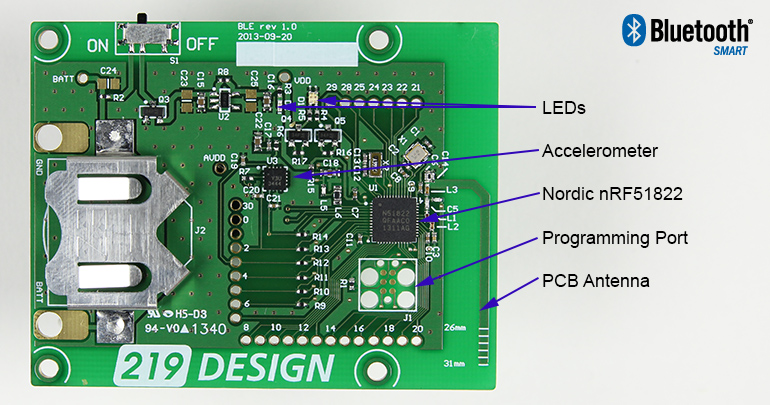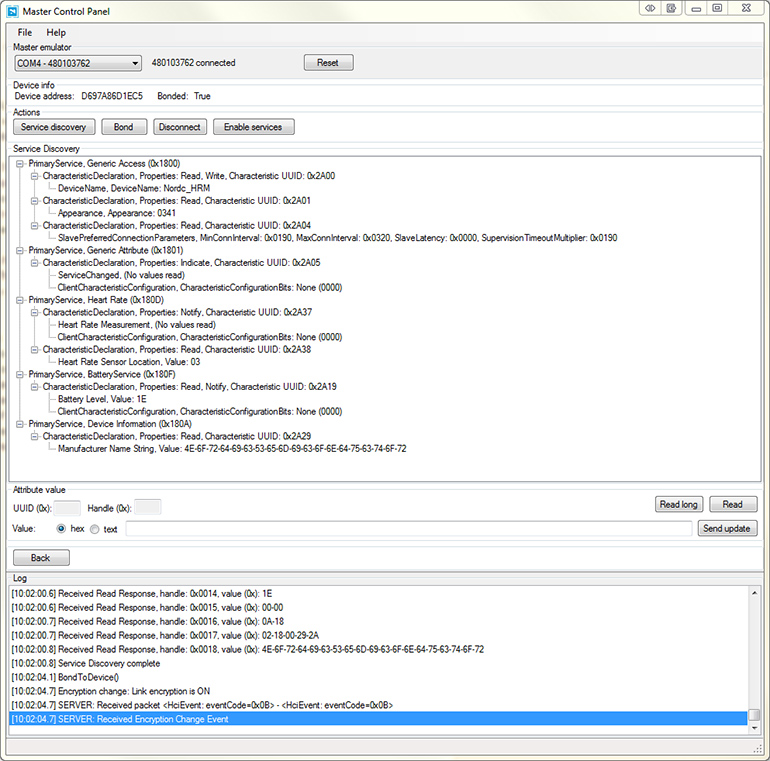
Bluetooth Low Energy (BLE) aka Bluetooth Smart is an emerging wireless communication technology with major potential. Its incorporation into mobile handsets over the last few years has created a ton of opportunities for new and innovative products within the phone accessory space and beyond.
We at 219 have created numerous concept prototypes that have used BLE modules (e.g. BlueGiga, Laird), and we decided it was time to implement a chip-level custom solution. This exercise would give us a platform that we could learn from, experiment with, and leverage for both quick-and-dirty prototypes and production-ready designs. The first step in this process was to select an IC that would meet our general requirements of being low cost, widely available, and simple to use.
219 has been keeping tabs on industry leading chips used to integrate BLE technology into custom designs. There are currently several popular System-on-Chip (SoC) options available which combine a BLE radio and microcontroller hardware into a single IC, allowing for a low cost, low power and compact solution. Major contenders available today include those made by CSR, Texas Instruments, and Nordic Semiconductor.
After evaluating different options, 219 decided to go with the Nordic nRF51822 for our design. We were able to leverage the Altium-based reference designs (the same electrical design software we use in house) to make quick work of a simple custom PCB design that includes a 3-axis accelerometer, LEDs, a coin cell battery clip, and many pins broken out to test points for easy connectivity when experimenting with our BLE hardware platform.
Once PCB fab and assembly were complete, it was really easy to bring up and test the board using the Nordic programming toolchain. The Nordic solution provides a pre-compiled “soft device” which contains the BLE peripheral stack. This can be programmed into the nRF51822 using nRFgo Studio provided by Nordic. The user application which interfaces with the stack is developed, compiled, and programmed completely independently of the soft device. This allows for quicker programming for the user application, and makes it easy to organize application specific code. We used the Keil IDE, but GCC and IAR development environments will also work.
Now that we have a hardware design that we can pull off the shelf at a moments notice, along with a dependable software toolchain, we are ready to have some fun! More BLE developments will be coming soon.

Nordic Master Control Panel (allows PC to see all BLE properties of a peripheral device)
